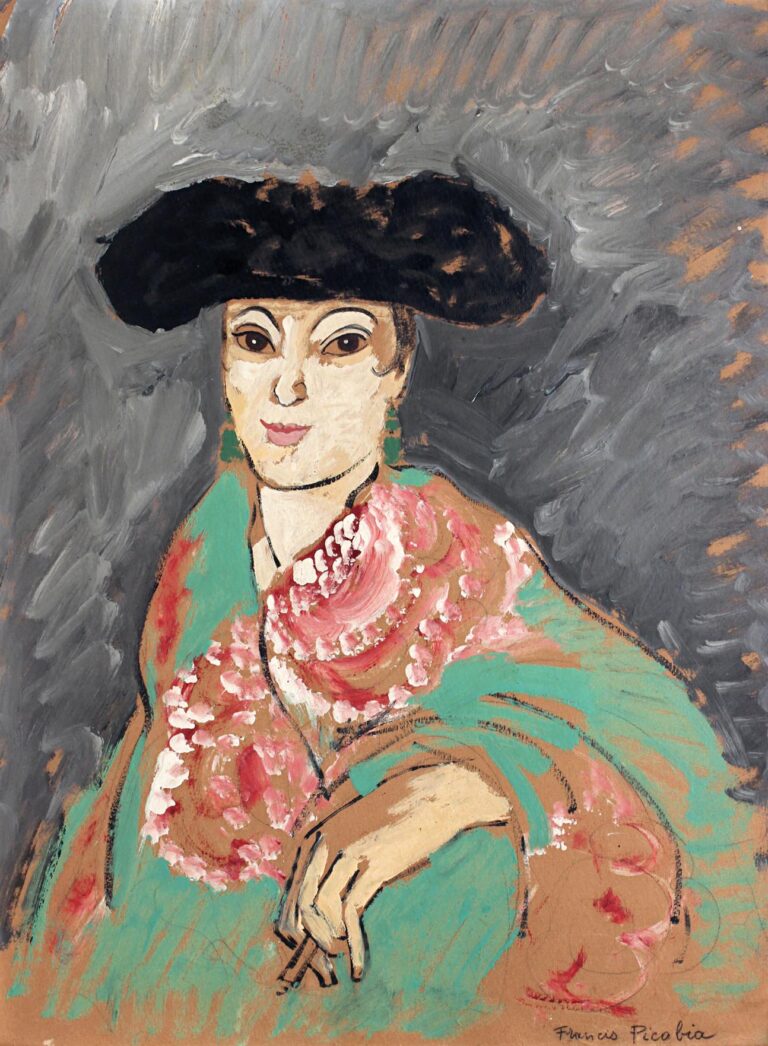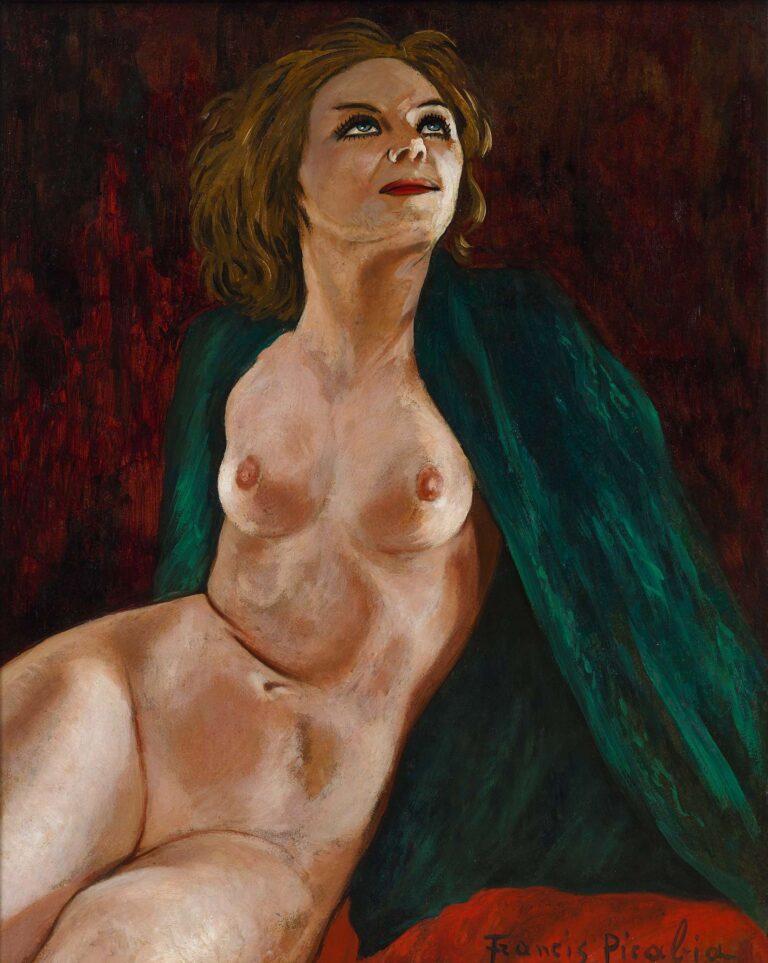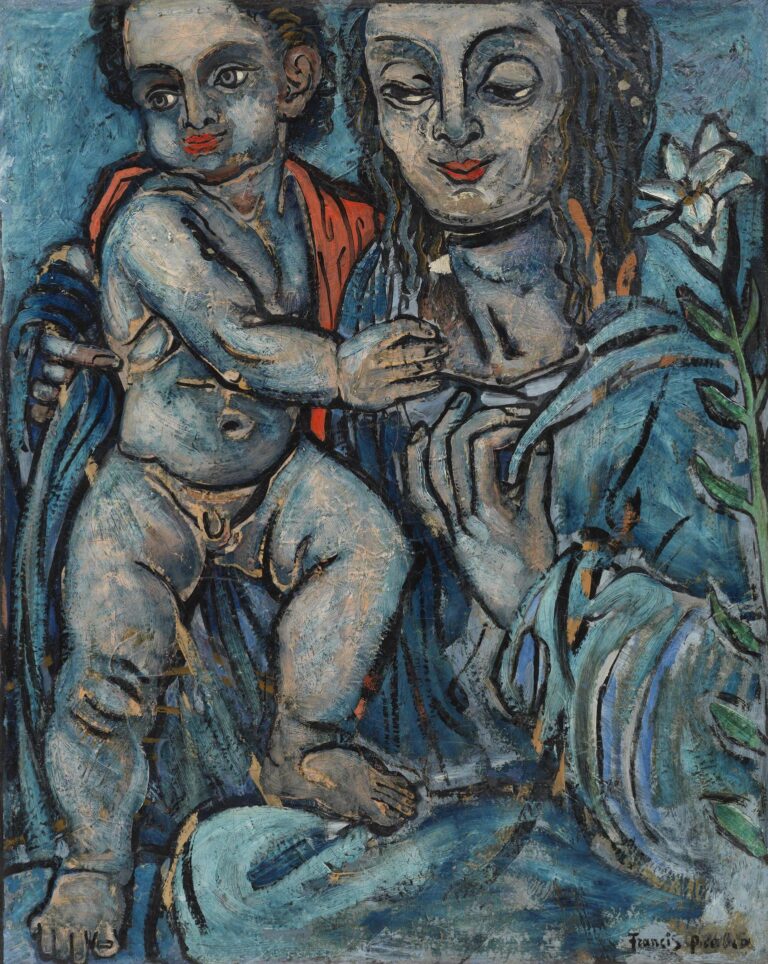Francis Picabia
Picabias Frauen
Opening – 26 APR 2024, 6-9 pm

Toréador, ca. 1938 – 1940, oil on cardboard, 28 ¼ x 21 ½ in,
Courtesy Galerie Michael Werner, Berlin
When after several glorious centuries modern painting lay down to die in Paris in the 1920s-1930s, it left Francis Picabia (1879-1953) standing like the prodigal son at its side. Picabia devoted just about the same energy to reanimating it as his artist friend Duchamp did to calling for the death sentence to be pronounced on the old profession (with all the consequences this had). Driven by his frustration as a former Dadaist, in 1925 Picabia lent the figures of Titian and Velázquez topicality in the shape of “monsters” whom he provocatively treated to a coat of industrial varnish. In this way, he immunized his painting (and also other “bad paintings”) against the authority of the prevailing tastes of his day. Two years later, he loosened the suffocating corset of what was considered style by presenting his “Transparencies”. The translucent superimposition of several figure outlines opens paintings pictorial space up to a musée imaginaire. An ardent Nietzschean, he also sought to salvage his métier in the extra-moral. Picabia teaches us, for example, to perceive the Queen of Heaven from Roman portal sculptures as the equivalent of a pin-up nude from a magazine. The scion of old Spanish nobles also sought to nurture his image as an artist through competition with Duchamp and with that other Spaniard in Paris, Picasso. While Duchamp celebrated his own intellectual aristocracy in the image of the impoverished high noble, Picabia gave himself the image of the nomadic playboy who anchors his yacht off the Côte d’Azur when he is not out in his sportscar.

Femme au châle vert, 1940 – 1943, oil on cardboard on canvas, 36 ¼ x 28 ¾ in,
Courtesy Galerie Michael Werner, Berlin

Maternité bleue, 1936 – 1938, oil on canvas, 40 ¼ x 32 ¼ in,
Courtesy Galerie Michael Werner, Berlin
The vertiginous heights of the intelligence quotient of the two friends came a crashing in Eros, which Duchamp made his motto in the guise of a transvestite. By contrast, Picabia the Beau was so devoted to chercher la femme that Gabrielle Buffet, his first wife, alleged he suffered from a mother complex. Each of the numerous intellectual facets of his art reflects on the female figure. It is the main theme of his oeuvre. The present selection covering the years 1925-1950 explores the pulse of painting, and it beats strongly and resolutely in “Picabias Frauen”.
The exhibition Picabias Frauen opens on Friday, April 26, 2024, from 6 – 9 p.m. and will run until June 22, 2024 at Galerie Michael Werner Berlin. The exhibition will be accompanied by a catalogue with an essay by Dave Hickey.
